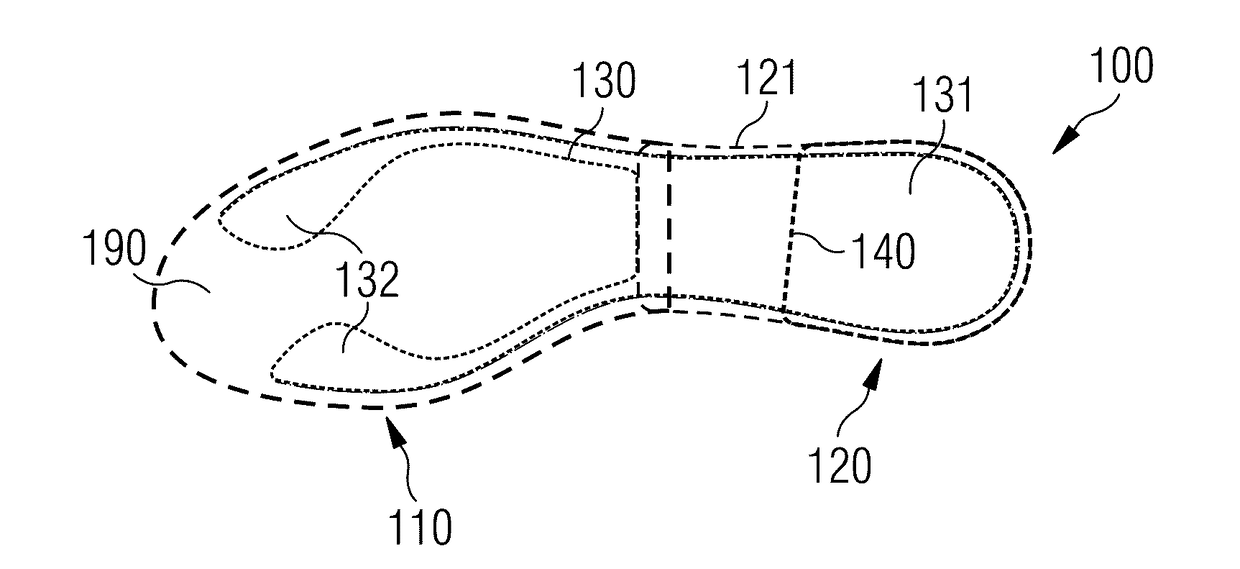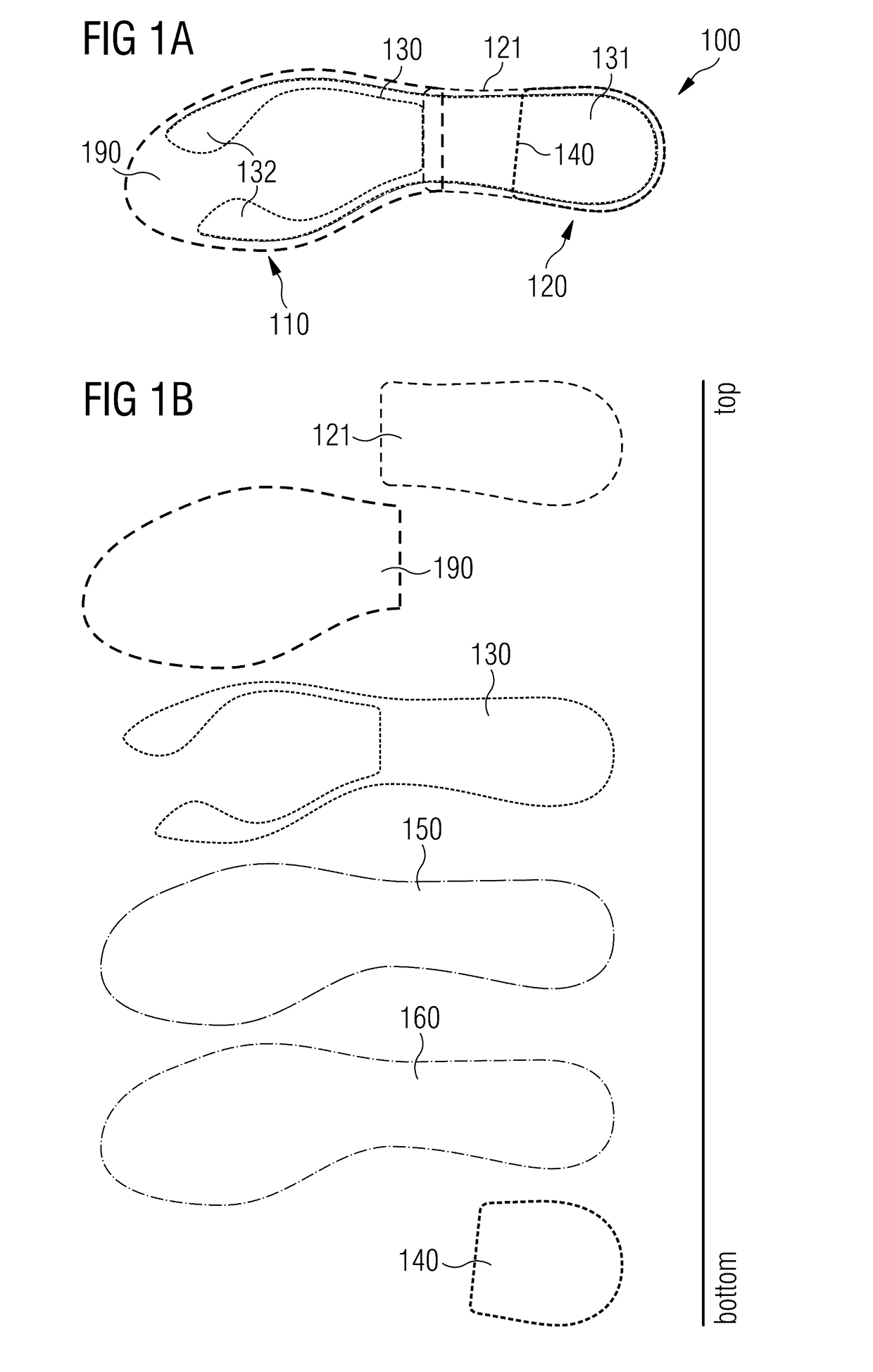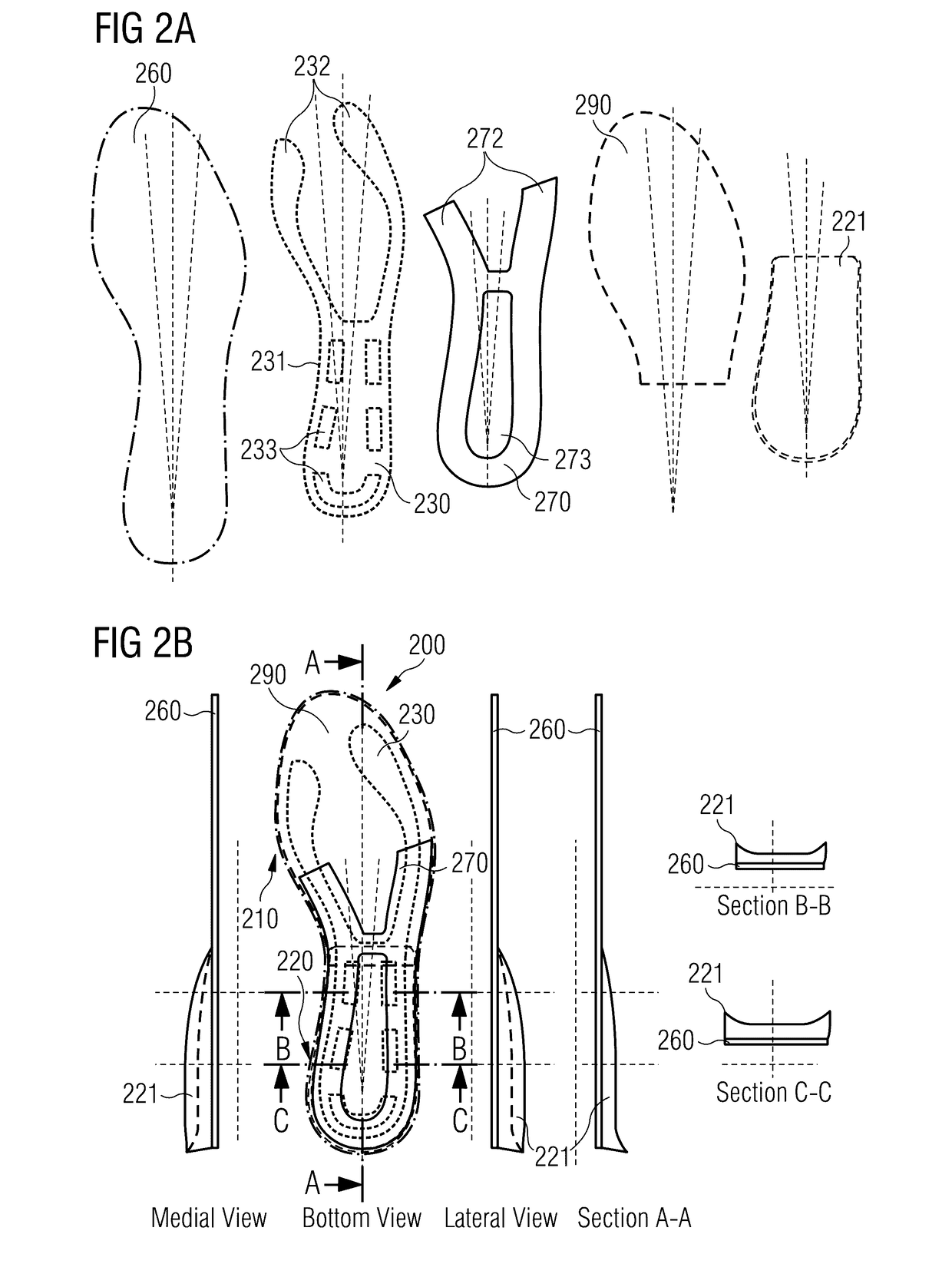Sole elements and shoes
a technology of sole elements and shoes, applied in the field of sole elements, can solve the problems of requiring toxic substances, affecting the effect of lateral extension, and insufficient insulation of shoes from their environment, etc., and achieve the effect of large lateral extension
- Summary
- Abstract
- Description
- Claims
- Application Information
AI Technical Summary
Benefits of technology
Problems solved by technology
Method used
Image
Examples
embodiment 1
2. Sole element , wherein a resilience of the deformable material is below 80%, preferably below 50%, particularly preferably below 15%.
3. Sole element according to embodiment 1 or embodiment 2, wherein the first portion comprises a resilient material (150, 160; 260) having a resilience that is higher than a resilience of the deformable material (121; 221; 321), preferably higher by at least 15%, particularly preferably by at least 25%, and / or having a resilience that is at least 20%, preferably at least 35%, particularly preferably at least 50%.
4. Sole element according to embodiment 3, wherein the resilient material (150, 160; 260) comprises a thermal conductivity below 100 mW / (K·m), preferably below 75 mW / (K·m), particularly preferably below 60 mW(K·m).
5. Sole element according to any of embodiments 1-4, wherein the deformable material (121; 221; 321) comprises a foam material, in particular a (poly-)urethane foam material.
6. Sole element according to any of embodiments 1-5, wher...
embodiment 30
31. Shoe , wherein the insulating layer is at least partially arranged in at least one recess of the outsole.
embodiment 31
32. Shoe , further comprising at least one profile element formed on the outsole opposite to the at least one recess.
33. Shoe according to any of embodiments 30 to 32, wherein the insulating layer comprises a foam material, in particular a (poly-)urethane foam material.
PUM
| Property | Measurement | Unit |
|---|---|---|
| Fraction | aaaaa | aaaaa |
| Fraction | aaaaa | aaaaa |
| Power | aaaaa | aaaaa |
Abstract
Description
Claims
Application Information
 Login to View More
Login to View More - R&D
- Intellectual Property
- Life Sciences
- Materials
- Tech Scout
- Unparalleled Data Quality
- Higher Quality Content
- 60% Fewer Hallucinations
Browse by: Latest US Patents, China's latest patents, Technical Efficacy Thesaurus, Application Domain, Technology Topic, Popular Technical Reports.
© 2025 PatSnap. All rights reserved.Legal|Privacy policy|Modern Slavery Act Transparency Statement|Sitemap|About US| Contact US: help@patsnap.com



